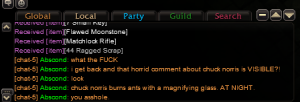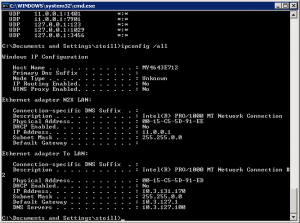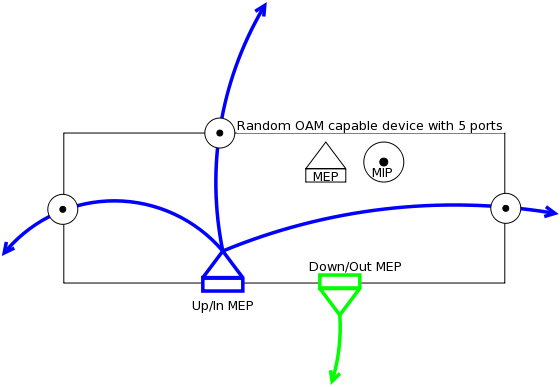I was amazed to see, that the game is actually already online. Was hearing rumors, that the team that left Blizzard North to start a new company named Flagship studios has declared bankrupt and abandoned the title. For some reason, while watching my own blog from my work PC for defects and glitches (don’t tell my boss 😉 ) I spotted an Advertising below the menu, claiming Mythos is already playable (closed beta is over).
I almost clicked my own Ad unit, which is actually forbidden by Google and may ban my Adsense account 😀
Anyway. First impressions.
The game is still very young. The servers are not very populated yet, but even so the developer team has implemented “rooms”, so If you are hunting in a full room, you may switch to an emptier one. For solo-lovers like me, this is very good. Even with young server population, we already see few capped heroes (5 days since start) so I suppose, this game will be more Blizzard-like than the other free-to-play MMORPGs around the globe. That means, the build should be all basic and straight forward to be made and EVERYTHING will be based around how good is your equipment. At least everyone in the Forum that reached level cap claims “It’s extremely boring” after this and all you have to do is hunt better equips and make money for your alt characters. (check the forum)
The 3D view may benefit from some fixes. The isometric 3D view is fine. The free view (MMO style) is badly implemented though. The same left mouse button is used to move/attack and for free-rotate too. Because of this, you often think you clicked on a monster, while actually you rotated your view. Also, you may rotate to such angle, that you actually look very … intimately … closely … near … at your hero’s a$$. In hack and slash games like this, few seconds of tinkering with your mouse to reposition your view can be critical. So I quickly abandoned the free 3D view and turned to isometric.
Intuitive controls. WASD + mouse. Every letter you used in Diablo II does the same here. The new stuff is World map, accomplishments Journal and Crafting. Enough said.
Three stream of classes. Thug, mage, mechanic. All of them has 3 main subclasses, which can be combined between (a.k.a. builds) in a way, that you may choose skills from all 3 subclasses or focus on a single one. Playable races. Elven, Cyclops, Human and Satyr. All four has their own pros and cons. Elves are cute, small, accurate. Cyclops are strong brutes with more armor and endurance. Humans are high HP jack-of-all-traders. And Satyrs have most MPs of all classes. To mix all this is to have (4 rases x 3 classes x 3 subclasses) 26 possible combinations of the pure builds. (e.g. every Cyclops Bloodletter will have 3 pure builds, every Gremlin Pyromancer too and so on).
On every level up (Level cap is 50) you receive 2 skill points, 5 stat points and 2 craft points. So far if there are no quest that give few point to this or that – those point are enough for … nothing. You make some points to Str and Vit so you can equip the stuff you will need and focus on pure Strength, Dexterity, Vitality or Spirit. There is another stat called Luck, which is not advanceable by leveling up. Equipment only.
Money. 100 copper = 1 silver, 100 silver = 1 gold, (and maybe 100 gold was 1 of whatever this in the left looked like, but they removed it already). The trade system is like WoW. You get your stuff into the market list and set start bid and final price. Basically, the good stuff can be started @ 10 to 20 times the NPC price. At least the good yellow (unique) ring goes in 10 minutes for 20 times the NPC price and level 15 hero can get 1-2 unique drops by quests only, so it’s not constant grinding for money. If you succeed in selling, you receive your money by mail 😀 while grinding in the deepest dungeon with 5% tax deducted. Much different from Fiesta online or Maple Story’s casual shop, where you have to stay online in the market until trading.
There are some nasty bugs, like “you can’t shoot monsters laying in your feet”. You kill everything else with ease, but the monster that is in same XY coordinates as you – totally invulnerable to shooting. Grenades work though. Hope they fix this soon or add “kick” skill :D. The Free-MMO-like-3D view is a bad experience also. Some quests description is inaccurate, misleading or not translated good. E.g. “I’ve spent all my craft skills for BS and still can’t get a quest done, because it says Heraldry level above 2, then not explaining WHICH skill exactly you should rise to reach this level”. Hopefully and thankfully there is NPC that resets skill points (a.k.a. respec) and this will not be fatal. Sorry to say, the Stats can not be reset and if you choose to focus on STR, DEX or WIS – you stick with this for the chosen build.
Grinding barrier is reached normally after ~ 4-5 days of playing and starts at level 21. Quests are not enough to proceed leveling by them and you have to grind. The best place for grinding is … ahem … FAP, 😀 accessible from Crumbled Kingdom and there are often parties of 3-4 people collecting more for entering FAP instanced dungeon.
Server maintenance. Thursday. Really annoying. The same day as most of the other free MMORPGs around. I was hoping to play this game when Fiesta Online is down for maintenance. Hopefully Maple Story will keep their maintenance @ Wednesdays for the time being.



